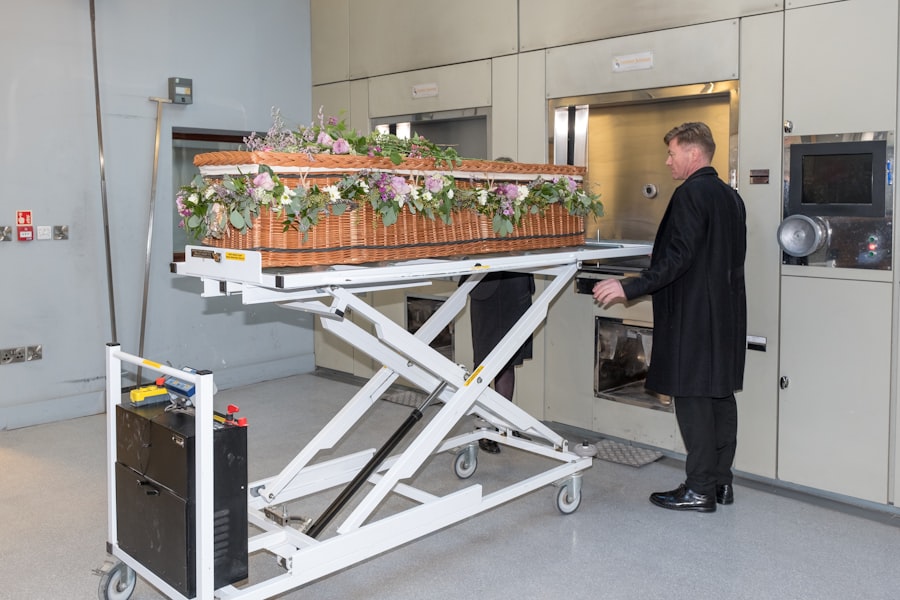The funeral home market is a unique and sensitive sector that operates within the broader context of the healthcare and service industries. It encompasses a range of services, including traditional funerals, cremation, memorial services, and pre-planning options. The market is influenced by various factors, including cultural practices, demographic shifts, and economic conditions.
For instance, as the population ages, particularly the Baby Boomer generation, there is an increasing demand for funeral services. This demographic shift necessitates that funeral homes adapt their offerings to meet the evolving needs and preferences of families during their time of grief. Moreover, the funeral home industry is characterized by a high level of competition, with numerous establishments vying for the same clientele.
This competition is not only local but also increasingly national, as families may choose to compare services and prices online before making decisions. Understanding the nuances of this market requires a deep dive into consumer behavior, which often reflects a blend of emotional and practical considerations. Families are looking for compassionate service providers who can guide them through one of life’s most challenging moments while also being transparent about costs and options available.
Key Takeaways
- Understanding the funeral home market is essential for effective marketing strategies.
- Identifying target audiences helps tailor services and communications appropriately.
- Utilizing digital marketing tools enhances reach and engagement with potential clients.
- Building a strong online presence establishes credibility and trust in the community.
- Measuring and analyzing marketing results ensures continuous improvement and success.
Identifying Target Audiences
Identifying target audiences in the funeral home market involves recognizing the diverse groups of people who may require services at different times. The primary audience typically includes families who have recently lost a loved one, but this is just the tip of the iceberg. There are also individuals who are planning for their own end-of-life arrangements, often referred to as pre-need clients.
This group may include older adults or those with chronic health conditions who are seeking peace of mind regarding their final wishes. Additionally, cultural and religious backgrounds play a significant role in shaping the needs and expectations of potential clients. For example, different cultures have distinct rituals and practices surrounding death and mourning, which can influence the type of services they seek.
Funeral homes must be attuned to these cultural sensitivities and offer tailored services that respect and honor these traditions. Furthermore, younger generations are increasingly involved in decision-making processes regarding funerals, often seeking more personalized and unique experiences that reflect the deceased’s life and values. Understanding these varied audiences allows funeral homes to craft targeted marketing strategies that resonate with each group.
Utilizing Digital Marketing Tools

In today’s digital age, utilizing digital marketing tools is essential for funeral homes looking to reach potential clients effectively. Search engine optimization (SEO) is one of the most critical components of digital marketing for this industry. By optimizing their websites with relevant keywords related to funeral services, cremation options, and grief support, funeral homes can improve their visibility on search engines like Google.
This increased visibility can lead to higher traffic on their websites, ultimately resulting in more inquiries and potential clients. In addition to SEO, pay-per-click (PPC) advertising can be an effective strategy for funeral homes to target specific demographics actively searching for services. By creating targeted ads that appear in search results or on social media platforms, funeral homes can reach individuals at critical moments when they are seeking assistance.
Furthermore, email marketing can serve as a powerful tool for maintaining relationships with past clients and nurturing leads. Sending out newsletters that provide valuable information about grief support resources or upcoming community events can keep the funeral home top-of-mind for families during difficult times.
Building a Strong Online Presence
| Metric | Description | Target/Goal | Measurement Tool |
|---|---|---|---|
| Website Traffic | Number of visitors to your website | 10,000+ monthly visitors | Google Analytics |
| Social Media Followers | Total followers across platforms (Facebook, Instagram, Twitter, LinkedIn) | 5,000+ followers | Platform Insights (e.g., Facebook Insights) |
| Engagement Rate | Percentage of audience interacting with content (likes, comments, shares) | 5%+ engagement rate | Social Media Analytics Tools |
| Search Engine Ranking | Position of website for targeted keywords on search engines | Top 3 positions on Google | SEO Tools (e.g., SEMrush, Ahrefs) |
| Email Subscriber Growth | Number of new email subscribers per month | 200+ new subscribers monthly | Email Marketing Platform Analytics |
| Content Publishing Frequency | Number of blog posts or articles published per month | 8+ posts monthly | Content Management System Reports |
| Conversion Rate | Percentage of visitors completing desired actions (sign-ups, purchases) | 3%+ conversion rate | Google Analytics / CRM Tools |
A strong online presence is crucial for funeral homes in establishing credibility and trust within their communities. This presence begins with a well-designed website that serves as a central hub for information about services offered, pricing, and contact details. The website should be user-friendly, mobile-responsive, and contain clear calls to action that guide visitors toward making inquiries or scheduling consultations.
Including testimonials from families who have utilized the services can also enhance credibility and provide social proof of the quality of care provided. Beyond the website, funeral homes should consider creating informative blog content that addresses common questions and concerns related to end-of-life planning. Topics might include how to choose between burial and cremation, understanding grief stages, or tips for planning a meaningful memorial service.
By providing valuable content, funeral homes can position themselves as knowledgeable resources in their communities while also improving their search engine rankings through consistent content updates.
Leveraging Social Media Platforms
Social media platforms offer funeral homes an opportunity to connect with their communities in a more personal and engaging manner. Platforms such as Facebook, Instagram, and Twitter allow funeral homes to share stories, memories, and tributes to those who have passed away while also providing information about upcoming services or community events. By sharing heartfelt content that resonates with followers, funeral homes can foster a sense of community and support among families dealing with loss.
Moreover, social media can be an effective channel for promoting educational content related to grief support and end-of-life planning. For instance, hosting live Q&A sessions on Facebook or Instagram can provide families with an opportunity to ask questions about funeral services in a comfortable setting. Additionally, sharing articles or resources about coping with grief can position the funeral home as a compassionate leader in the community.
Engaging with followers through comments and messages also helps build relationships and trust, which are essential in this sensitive industry.
Implementing Community Engagement Strategies

Community engagement is vital for funeral homes looking to establish themselves as trusted pillars within their local areas. One effective strategy is to host community events that focus on topics related to grief support or end-of-life planning. Workshops or seminars featuring guest speakers such as grief counselors or financial planners can provide valuable information while also allowing families to connect with others who may be experiencing similar challenges.
Additionally, partnering with local organizations such as hospices, churches, or support groups can enhance community ties and create referral networks. By collaborating on events or initiatives that promote awareness around grief and loss, funeral homes can demonstrate their commitment to supporting families beyond just providing services at the time of death. Such partnerships not only enhance visibility but also reinforce the message that the funeral home is dedicated to serving its community holistically.
Creating Compelling Content and Messaging
Creating compelling content and messaging is essential for funeral homes aiming to connect with families during their most vulnerable moments. The tone of communication should be empathetic and supportive while providing clear information about available services. Crafting messages that acknowledge the emotional weight of loss while also offering practical solutions can resonate deeply with potential clients.
Visual storytelling can also play a significant role in conveying messages effectively. Utilizing photographs or videos that capture the essence of memorial services or highlight personal stories can create an emotional connection with audiences. For instance, sharing a video tribute that showcases a loved one’s life through photos and memories can serve as a powerful reminder of the importance of honoring those who have passed away.
By focusing on storytelling rather than just service offerings, funeral homes can create a more profound impact on families seeking guidance during difficult times.
Measuring and Analyzing Marketing Results
To ensure that marketing efforts are effective and aligned with business goals, measuring and analyzing results is crucial for funeral homes. Utilizing analytics tools such as Google Analytics can provide insights into website traffic patterns, user behavior, and conversion rates. By understanding which marketing channels drive the most inquiries or engagement, funeral homes can allocate resources more effectively and refine their strategies accordingly.
Additionally, tracking social media engagement metrics such as likes, shares, comments, and follower growth can help assess the effectiveness of content shared on these platforms. Surveys or feedback forms sent to families after services can also provide valuable insights into their experiences and perceptions of the funeral home’s marketing efforts. By continuously evaluating these metrics, funeral homes can adapt their approaches to better meet the needs of their communities while ensuring that they remain relevant in an ever-evolving market landscape.





